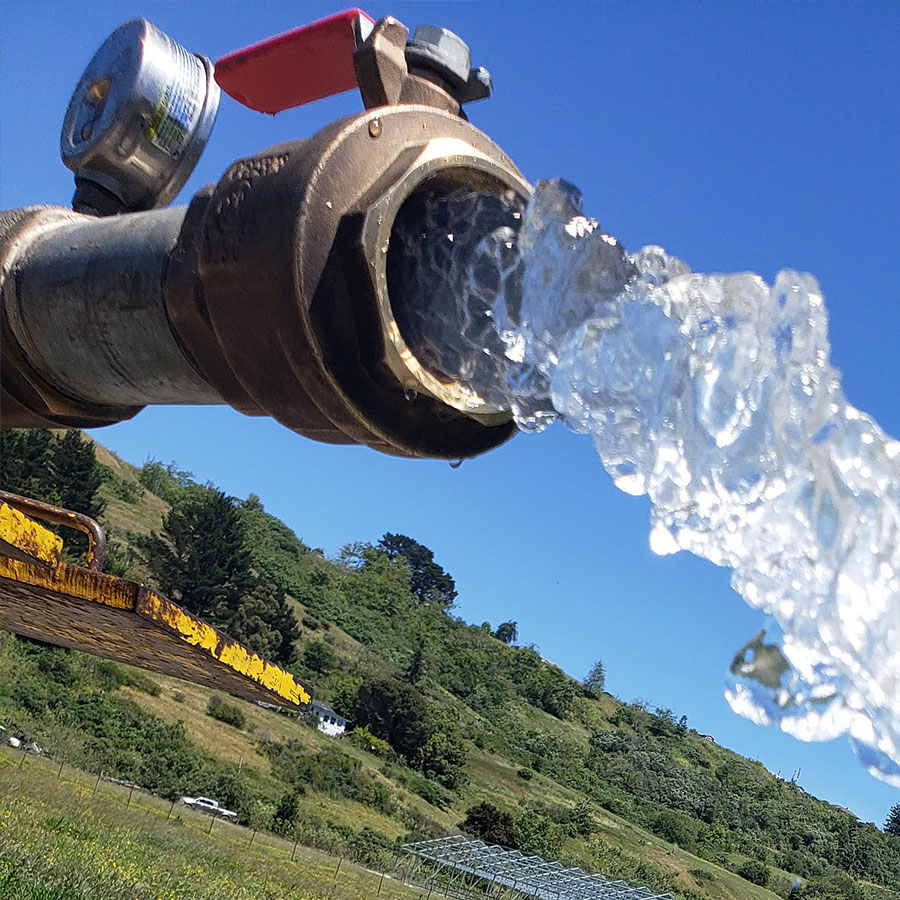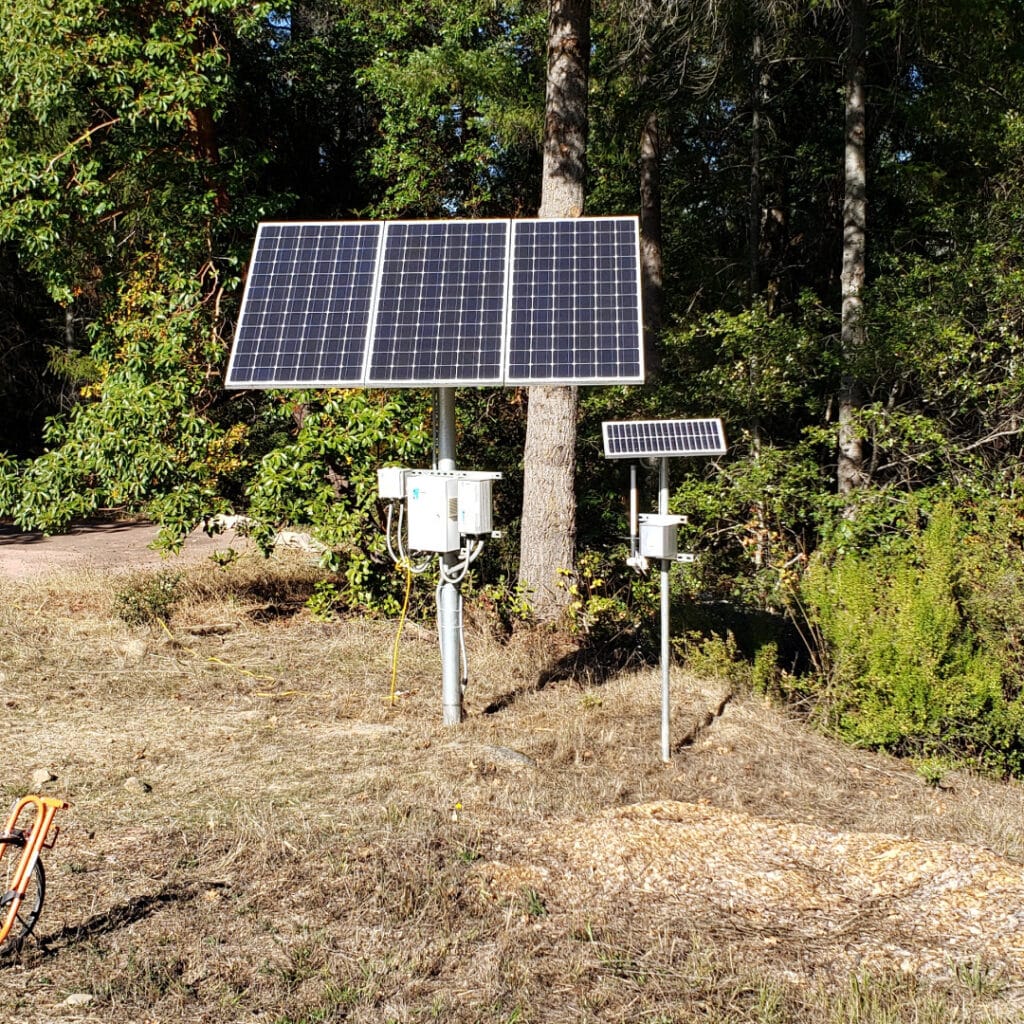
Water is a basic need for all of us. But what happens when you live far from the city’s water system? That’s where off-grid well systems, pumps and wells come in. They let people living away from city services get clean water. This article will talk about these other water systems too, including solar-powered ones.
Understanding Off-Grid Wells
An off-grid well is a water source that’s independent of the public water system. To create a well, you must drill deep into the ground to reach water-bearing layers known as aquifers. Once you hit an aquifer, the water can be brought to the surface using various types of pumps.
What Are Off-Grid Pumps?
Off-grid pumps are a technology used to move water without relying on the main power grid. These pumps can be powered by different sources like wind, manual effort, or the sun. They’re perfect for remote areas where connecting to the main power grid and pumping out is hard or too costly.
Types of Off-Grid Pumps
- Hand Pumps: These are pumped manually. They’re simple and don’t need electricity.
- Wind-Powered Pumps: These use wind energy to pump water. They work well in windy areas.
- Solar Pumps: Solar panels power these pumps. They’re great in sunny places and are becoming more popular.
Why Choose Off-Grid Pumps?
There are several reasons why someone might choose an off-grid pump:
- Independence: You’re not tied to the public water supply.
- Cost: After the initial setup, the running costs are low because you’re not paying for electricity.
- Environment: Using renewable energy is better for the planet.
How Do Wells Work?
A well is a deep hole dug or drilled into the ground to reach water. The type of well or pipe you need depends on how deep the water is:
- Shallow Wells: These are typically dug by hand or with a small machine and can reach depths of up to 30 feet. They’re suitable for areas with high groundwater levels.
- Deep Wells: For lower groundwater levels, deep wells are drilled, often reaching several hundred feet. They require more advanced equipment and stronger pumps to extract water.
Deep Well Hand Pumps – Sustainable Preparedness
When you’re getting your property ready for emergencies, one of the most critical factors is water supply. That’s why having a deep well hand pump is a smart idea.
What is a Deep Well Hand Pump?
A deep well hand pump is a tool that lets you get water from a well without using electricity. It’s perfect for when the power goes out, you do not have a generator, or if you live off the grid.
Why You Might Need One
- Power Outages: If there’s no electricity and no backup power, your regular well pump won’t work.
- Living Off the Grid: If your home has limited electrical capacity, a hand pump is a great solution.
- Emergency Preparedness: In case of natural disasters, having a hand pump means you still have access to clean water.
How They Work
These pumps use human power. You move the handle up and down, and it pulls water up from a tank on the ground. It might take some effort, but it’s worth it to have fresh water.
Things to Consider
- Depth of Your Well: Make sure the pump you choose can reach the water in your well.
- Water Needs: Think about how much water you’ll need each day and if the pump can handle that.
- Installation: Some pumps are easy to install yourself, while others might need a professional.
The Role of Pumps in Off-Grid Living
Pumps are the heart of the well system. They’re responsible for moving water from the well or storage tank to your home or garden. There are several types of pumps available, each suited for different needs:
- Hand Pumps: Simple and manual, these are perfect for shallow wells and require physical effort to operate.
- Submersible Pumps: Placed inside the well, they push water to the surface and are ideal for deep wells.
- Jet Pumps: Located above ground, they use suction to draw water, working well for both shallow and moderately deep wells.
Solar Off-Grid Pumps: A Sustainable Solution

Solar off-grid pumps are a game-changer for remote locations without access to electricity. These pumps use solar panels to convert sunlight into electrical power, operating the pump without any need for power lines a traditional electric power grid.
- Solar Panels: These collect sunlight and turn it into electricity.
- Controller: This manages the power to make sure the pump works smoothly.
- Pump: It uses the electricity to pump water from the well.
Benefits of Solar Pumps
- Reliable: They work as long as there’s adequate sunlight.
- Low Maintenance: Fewer moving parts mean less can go wrong.
- Green Energy: Solar power doesn’t pollute the environment.
Components of a Solar Pump System
A typical, solar panel and pump system includes:
- Solar Panels: These collect sunlight and convert it into electricity.
- Charge Controller: It regulates the voltage from the solar panels to prevent battery damage.
- Batteries: They store energy for use when sunlight isn’t available.
- Inverter: This converts the stored DC power from the batteries into AC power to run the pump.
- Pump: The actual mechanism that moves water from the well to its destination.
Installing an Off-Grid Well and Pump System
Installing an off-grid well and water pump also requires careful planning and consideration of several factors:
- Location: Identify the best spot for drilling a well where the water table is accessible.
- Permits: Check local regulations and obtain necessary permits before drilling.
- Professional Help: Hiring experienced drillers and installers ensures a safe and efficient setup.
- Water Testing: Test the water quality to ensure it’s safe for consumption and usage.
- System Design: Choose the right pump and solar system size based on your water needs.
Maintenance and Troubleshooting
Regular maintenance is crucial for the longevity of water source of your off-grid, well pump and pump system. Here are some tips:
- Inspect the well cover to prevent contamination.
- Check the pump and solar panels for any signs of wear or damage.
- Clean the solar panels regularly to maintain efficiency.
- Test the water periodically for quality assurance.
If you encounter issues like low water pressure or no water at all, troubleshooting steps include checking for leaks, ensuring the pump is powered, and verifying that the solar panels are functioning correctly.
Challenges and Solutions
Living off-grid has its challenges. For one, if there’s no wind or sun, your wind turbines or solar pumps won’t work. You might need a backup plan, like a hand pump or stored water. Also, the upfront cost can be high, but remember, you save money in the long run on utility bills.
Off-grid pumps and wells give you freedom and self-reliance. Whether you choose a hand pump, a pressure tank, a wind-powered pumping system, or a solar pump, you can have a steady water supply even in the most remote places. With careful planning and maintenance, an off-grid water system can serve you for years, saving money and helping the environment.
Four tips and Key Takeaways on Off-Grid Wells & Pumps
1. Understand Your Water Needs
Before you dive into off-grid well building, it’s important to know how much water you need. Think about your daily water use, like drinking, cooking, and bathing. Also, consider if you need water for farming or animals. This will help you choose the right size pump and solar panel setup.
Key Takeaway: Figure out how much water you use to pick the best pump and solar power system.
2. Learn About Solar Panels
Solar panels are the best choice for off-grid pumps. You’ll want to learn about different types of solar panels and how much sun they need to work well. Remember, more sunlight means more water pumped!
Key Takeaway: Get to know and consider the solar pump option for your off-grid water solution.
3. Find the Right Pump
There are many kinds of off-grid pumps. Some are made for deep wells, while others are for shallow water. The kind of pump you need depends on where your water comes from. Make sure to get a pump that can handle your water source.
Key Takeaway: Choose a pump that matches where your water is coming from for the best results.
4. Maintenance Matters
Like all machines, off-grid water pumps need to be taken care of. Keep an eye on your system and clean your solar panels regularly. If something breaks, fix it quickly to keep your water flowing.
Key Takeaway: Regular check-ups and cleaning will keep your solar water pump running smoothly.

